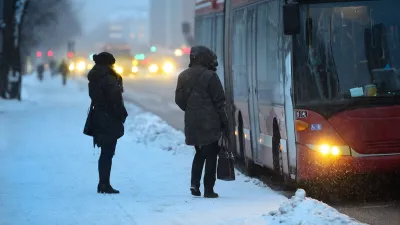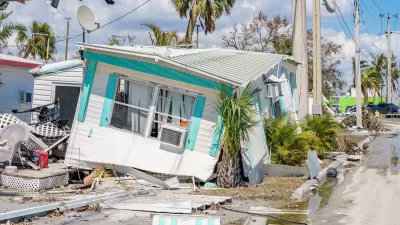John M. Broder writes about a new U.S. Department of Energy report released July 11th that details the vulnerability of the nation's entire energy system to climate change effects - from droughts, intense storms, rising seas, lower river levels...
Simply put, every source of power will be affected. Just as the climate will cause more strains placed on the power sector, e.g., from rising heat in West, the sector will be subject to numerous disruptions - the perfect storm.
Every corner of the country’s energy infrastructure — oil wells, hydroelectric dams, nuclear power plants — will be stressed in coming years by more intense storms, rising seas, higher temperatures and more frequent droughts.
We don't have to wait, writes Broder. It's happening now.
The effects are already being felt, the report says. Power plants are shutting down or reducing output because of a shortage of cooling water. Barges carrying coal and oil are being delayed by low water levels in major waterways. Floods and storm surges are inundating ports, refineries, pipelines and rail yards. Powerful windstorms and raging wildfires are felling transformers and transmission lines.
Every region in the United States will be affected. In the West, "(t)he Energy Department’s Argonne National Laboratory found that air conditioning demand will require 34 gigawatts of new electricity generating capacity by 2050, equivalent to the construction of 100 power plants. The cost to consumers will exceed $40 billion, the lab said."
In the Southwest, climate-caused water shortages will affect the cooling necessary for fossil fuel power plants as well as the production of hydroelectric power.
The report was overseen by Jonathan Pershing, deputy assistant secretary for climate change policy and technology. He said that "cities, states and the federal government must take steps to adapt and improve their resiliency in the face of more wicked weather."
The 82-page report (PDF) is composed of four chapters (in addition to executive summary and conclusion):
- Increasing Temperatures
- Decreasing Water Availability
- Increasing Storms, Flooding, and Sea Level Rise
- Adaptation Actions and Major Opportunities
FULL STORY: Climate Change Will Cause More Energy Breakdowns, U.S. Warns

Planetizen Federal Action Tracker
A weekly monitor of how Trump’s orders and actions are impacting planners and planning in America.

Map: Where Senate Republicans Want to Sell Your Public Lands
For public land advocates, the Senate Republicans’ proposal to sell millions of acres of public land in the West is “the biggest fight of their careers.”

Restaurant Patios Were a Pandemic Win — Why Were They so Hard to Keep?
Social distancing requirements and changes in travel patterns prompted cities to pilot new uses for street and sidewalk space. Then it got complicated.

Platform Pilsner: Vancouver Transit Agency Releases... a Beer?
TransLink will receive a portion of every sale of the four-pack.

Toronto Weighs Cheaper Transit, Parking Hikes for Major Events
Special event rates would take effect during large festivals, sports games and concerts to ‘discourage driving, manage congestion and free up space for transit.”

Berlin to Consider Car-Free Zone Larger Than Manhattan
The area bound by the 22-mile Ringbahn would still allow 12 uses of a private automobile per year per person, and several other exemptions.
Urban Design for Planners 1: Software Tools
This six-course series explores essential urban design concepts using open source software and equips planners with the tools they need to participate fully in the urban design process.
Planning for Universal Design
Learn the tools for implementing Universal Design in planning regulations.
Heyer Gruel & Associates PA
JM Goldson LLC
Custer County Colorado
City of Camden Redevelopment Agency
City of Astoria
Transportation Research & Education Center (TREC) at Portland State University
Camden Redevelopment Agency
City of Claremont
Municipality of Princeton (NJ)





























